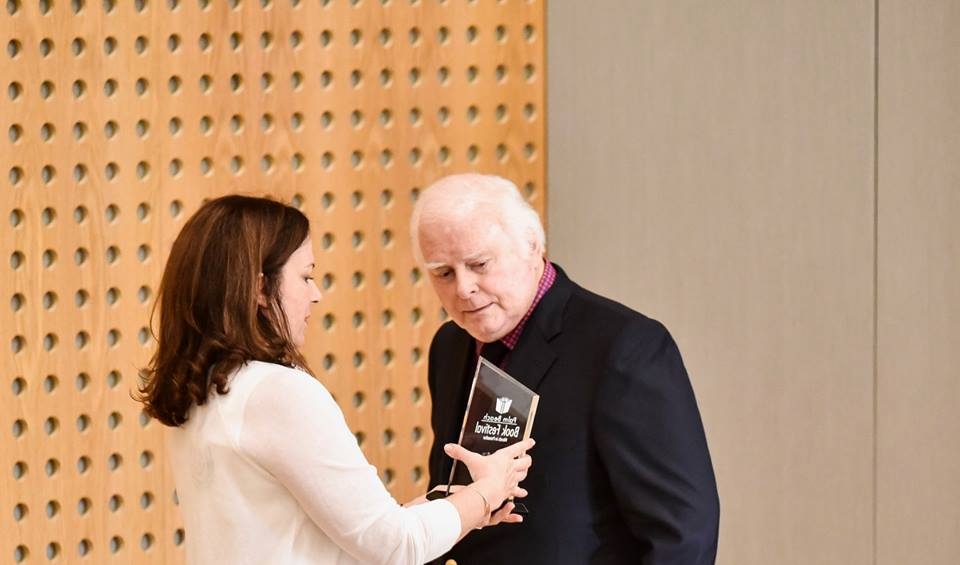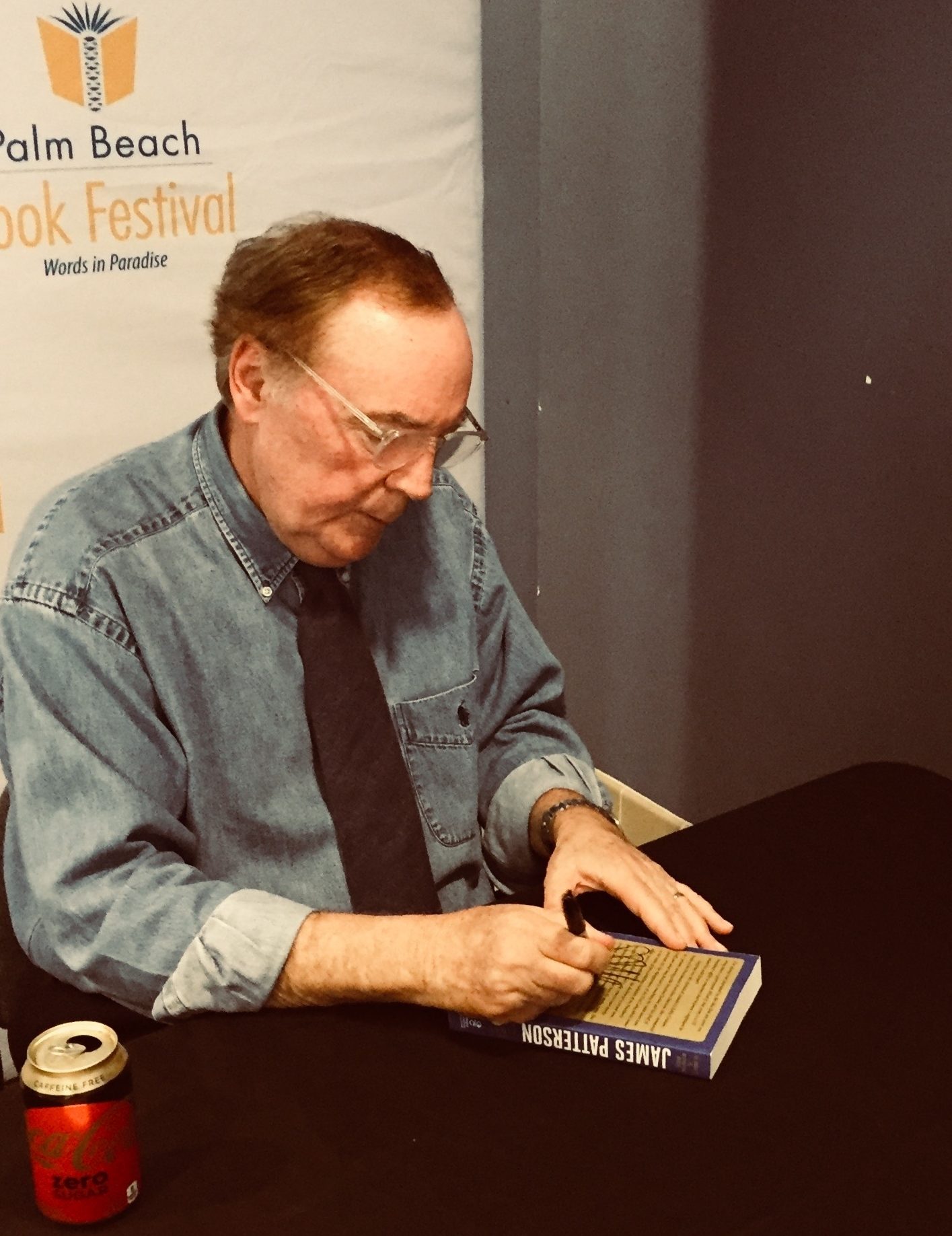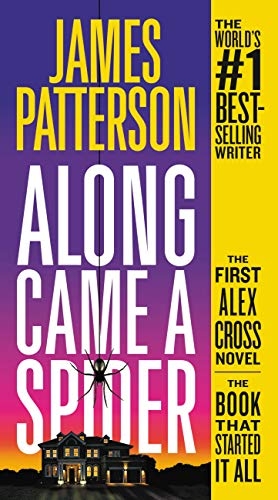
I recently had the thrill of listening to two of the most prolific, biggest, bestselling authors in the world talk about what it takes to become one of them.
Between them, Stuart Woods and James Patterson have published close to 300 novels over the last four decades. Most of those novels have been bestsellers. Both authors appeared at the 5th Annual Palm Beach Book Festival — and talked about the craft of writing bestselling fiction.
Both men worked in the advertising industry (and maybe there’s a clue, here: advertising copy must be crisp, concise and instantly comprehensible) before they started writing fiction. Both were awarded the Edgar by the Mystery Writers of America for their first novels.
Best First Novels

Patterson has written more than 200 thrillers. He has sold more than 350 million copies of his novels world-wide. He wrote his first novel, The Thomas Berryman Number in 1976. While it was initially rejected by 31 publishers, it won the Edgar for Best First Novel in 1977. Since 2002, he has written multiple books a year (in some years, as many as 14 thrillers a year) by employing co-authors.
The Mystery Writers of America also awarded Woods an Edgar for Best First Novel. That novel, Chiefs was published in 1981. Woods landed a contract on the basis of 100 pages of the novel. Norton paid him $7,500. Today he believes he would have gotten a bigger advance if he had handed over a finished novel. Chiefs went onto to become a CBS-TV mini series starring Charlton Heston.
Since 2014 — aged 76 — Woods has been producing four novels a year. He writes alone: “If you write the book by yourself, you get to keep all the money,” he laughs on stage at the Norton Museum of Art, in West Palm Beach. He adds, “I work too fast to work with someone else.”
Only Two Hours A Day
Woods appeared on the first panel of the Book Festival with moderator author Andrew Gross who, as it happens, was one of the first of Patterson’s co-authors (and talked about being Patterson’s co-author at a Palm Beach Writers Group lunch a couple of years ago.)
It took Woods eight years to write Chiefs. “I wish I’d finished it in one year, but I learned a lot writing it.” After that, he aimed to write one novel a year.” He told the Book Festival audience that back then he worked from 10-4. “I could write one chapter a day.
“Then, I began to write a chapter in two hours. Then, my publisher asked me if I could write three novels a year. He didn’t know that by then I was working only two hours a day, 2-3 days a week.”
These days, it takes Woods 60 working days to write a novel. “So, I can write four novels a year, and I only work one hour a day. I’ve learned to enjoy my work.” Setting deadlines is key for him. “I set my own deadlines, and I meet those deadlines.” After completing his writing, Woods turns over his manuscripts to an editor and a copy editor at his publishing house.
Recurring Characters Work
 Both Woods and Patterson hit the bestseller lists with novels featuring a recurring character. With Patterson, it was Alex Cross, an African-American detective in Along Came a Spider.
Both Woods and Patterson hit the bestseller lists with novels featuring a recurring character. With Patterson, it was Alex Cross, an African-American detective in Along Came a Spider.
With Woods, it was Stone Barrington, in New York Dead. Barrington is a cop, turned lawyer who solves the most troublesome cases for his law firm. Barrington is a rich playboy type who flies his own plane and beds (almost) every woman he meets. He is not the most complex character in thriller fiction, but his adventures and capers have made Woods so rich that he, too, owns a plane which he pilots himself.
Plant Ass In Chair
“One thing I learned early on,” says Woods, “is to plant my ass in a chair and write 1,500 words a day whether I liked it or not. You must work every day. And, I learned to get it right the first time.” Woods says he learned to get it right while he was still writing advertising copy. “I hated the sight of an editor’s blue pencil going over my copy. So, I wrote more carefully.”
According to Woods, it’s slightly easier to write a novel with a recurring character. “I know everything about Stone. Stone’s life is real to me. I live in the book. I am always in the room with Stone or in his airplane.” One factor doesn’t change about Stone and that’s his age. “No-one wants to read about a 70-year-old Stone Barrington.”
“I plotted out my first novel. But I discovered that what they say about always knowing your ending before you start is not true. I don’t outline anymore. I write one scene after another until around chapter 50, and then I think about how I’m going to end the story/book. If you listen to your characters, then they will speak plots to you, especially the bad guys.”
Outlines, Outlines, Outlines
 James Patterson, in contrast to Woods, is all about outlines. He is a big believer in knowing exactly where he is going with a plot, especially when he is working with a co-author. He said at the Book Festival, “I will produce an extended outline. Per year, I write 2,600 pages of outline.” Then, he hands over the outlines to his co-authors. “Then, I will look at his/her pages, and these days I usually do one re-write.”
James Patterson, in contrast to Woods, is all about outlines. He is a big believer in knowing exactly where he is going with a plot, especially when he is working with a co-author. He said at the Book Festival, “I will produce an extended outline. Per year, I write 2,600 pages of outline.” Then, he hands over the outlines to his co-authors. “Then, I will look at his/her pages, and these days I usually do one re-write.”
Patterson has described his style of writing in an online MasterClass. “Each chapter is a scene,” he says. “And, each scene should push the story forward.” He says, if a writer is having trouble with that idea, then take a character-driven approach. That is, ask: “What happens to your character in every chapter?” Something has to happen in each chapter.
Last year, Patterson, published four bestsellers. His first bestseller in 1992 was Patterson’s fifth novel. It is interesting to compare (using Amazon’s “Look Inside” feature) the first few pages of The Thomas Berryman Number with the first few pages of Along Came a Spider. Patterson’s first novel was written in five parts; his first bestseller in 89 chapters.
Asked by an African-American member of the Book Festival audience, how Patterson managed to write an African-American character so well, Patterson told the audience that his parents had owned a restaurant and employed an African-American cook who eventually moved in with his family when she and her husband split. “So, I knew there was more to African-American characters than boom-boxes which is how it seemed Hollywood mostly portrayed them. I wanted to write something closer to what I knew.”
James Patterson’s most recent novel is The Chef (although by the time of this blog’s publication he may have already published another book!) Stuart Woods’s latest thriller is A Delicate Touch.
What an honor to be in a room with two wonderful writers.
It’s always interesting to hear money-making writers talk about how they became bestselling authors. I find it fascinating.I always think I’m lucky to be able to attend such events.
What a great blog. I especially enjoyed hearing how Patterson is an outliner and woods is more of a pantser. I can’t tell you how many instructors I worked with over the years said you must outline your story before you begin. I find it so much more enjoyable to be a pantser and not knowing where the story is going until I’m well into the first draft. How cool to hear these master talk about the process and their histories.
I know. It’s not like there’s ever a tried and tested formula. All successful authors are successful in their own different ways. There is no “one size fits all” when it comes to writing.